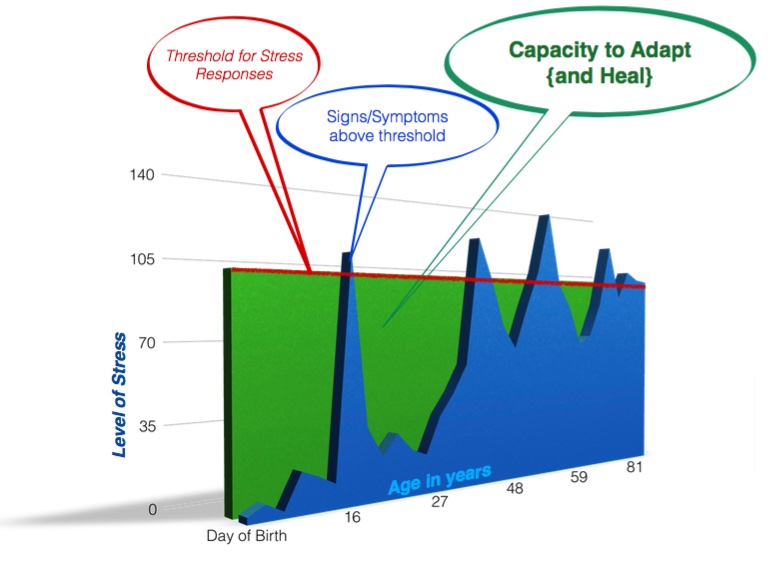“We’re living in a time where we each need a tremendous amount of courage —
a fierce kind of attention and intentionality.
The doorway is always through your pain and vulnerability,
the experience where you are open to the world whether you want to be or not.
I’ve come to consider vulnerability
as a form of imaginative intelligence,
and the good news is that it can be cultivated.
The real challenge is the pain that comes with vulnerable living.
When pain arises, it is tempting to say to yourself:
‘If this is the way that God is playing, no thanks, I’ll back up.’
Self-compassion is needed to understand this.
During and after the season of pain,
the question that comes up is:
‘Will I turn back to vulnerability, to living a wholehearted life?’”
~ David Whyte
When pain arrives at the doorstep of your awareness, do you move into the message from your body with courage? Do you recognize your ability to intentionally attend to any part of your body – a fierce kind of attention and intentionality – to follow what your body is calling for?
Living a wholehearted life.
Pain is described as a signal from within. It is not external. It is not foreign. It’s the language of the body asking for help. Asking for a different way to do things. The real challenge is the pain that comes with vulnerable living; the vulnerability to accept, once you listen to the body’s calling for balance and ease, to move in the direction of harmony and self-healing. How do you rediscover the flow of harmony?
The doorway is always through your vulnerability.
And in the vulnerability to life do you move with courage or do you fight, flee, or freeze? Courage comes from the root Norman French word cour, meaning the amount of heart you have in your life. Is there courage to participate in the unraveling of your being, to witness the shadows of your existence? Trace your shadows back to their source, toward expansion and receptivity. This is vulnerability.
Or, do other factors stronger than your courage send you in a direction of contraction? These come from reaction, inaction and the mind’s directions that pull you away from harmony and your source of vitality.
When pain arises, it is tempting to say to yourself:
‘If this is the way that God is playing, no thanks, I’ll back up.’
Actions of fight, flight or freeze create fixations in the body. Fixation requires the body to adapt. The body must compensate around these, sometimes in ways that shut off other vital functions that are initially unnoticed but, over time, become noticed. My teacher, Frank Lowen, says the body has amazing abilities to adapt, but that this is a finite amount, a finite space of living. Signs and Symptoms don’t become conscious until we use up the capacity to adapt. Meaning when the body has used up its abilities to adapt, it signals, “I can’t do this, this way anymore. Help!” These signals show up as degenerative processes, dis”ease” and pain.

When pain arises, can you discover ways to find more space? Can you have courage to step into the dark, into the unknown, into the silence inside yourself to willingly learn something consciously new from life itself?
A wedge of freedom inside your heart.
I say this with a great deal of compassion; Self-compassion is needed to understand this. With 20 years of clinical experience, I’ve observed many expressions of the body’s signal described as pain, and the responses to the body’s messages. Undoubtedly, pain is real, and the expression of pain is as individual as there are people in the world. Sometimes the volume of the pain signal is so loud, nothing else can be heard or felt. We can try as professionals to objectively measure pain, but to scientifically categorize this phenomenon is negating the individual experience, and therefore their interpretation and self-discovery.
“I’ve come to consider vulnerability as a form of imaginative intelligence,
and the good news is that it can be cultivated.
David Whyte describes imagination “is about your faith in the images inside you, the images of your particular way of belonging in the world.” A form of intelligence – imaginative, expressive, cultivated – from your ability to intentionally listen, discover and learn about the natural state of your being. We all have one thing in common: We are all trying to find our way back to harmony and experience divine Love. And our body “knows” this inherent desire, and will do anything to maintain a harmonious state. How amazing to know you have the potential to cultivate a deeper understanding and awareness to your existence with life. Cultivated from inquiry, the action of stepping through the threshold, out the door, exploring, discovering, recognizing, and integrating new experiences full of life; and knowing what you do on this day will make the days ahead greater.
Not new, but wholeheartedly and consciously new.
